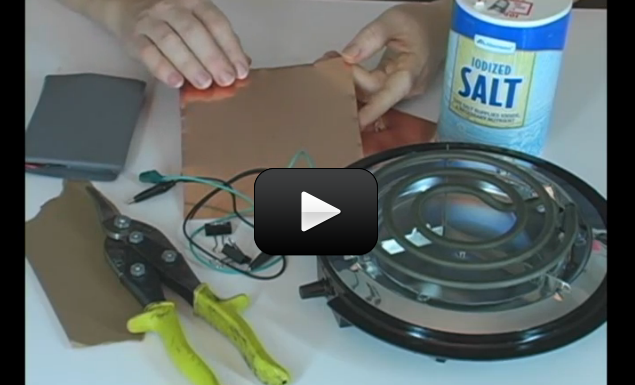This is the kind of energy most people think of when you mention ‘alternative energy’, and for good reason! Without the sun, none of anything you see around you could be here. Plants have known forever how to take the energy and turn it into usable stuff… so why can’t we?
The truth is that we can. While normally it takes factories the size of a city block to make a silicon solar cell, we’ll be making a copper solar cell after a quick trip to the hardware store. We’re going to modify the copper into a form that will allow it to react with sunlight the same way silicon does. The image shown here is the type of copper we’re going to make on the stovetop.
This solar cell is a real battery, and you’ll find that even in a dark room, you’ll be able to measure a tiny amount of current. However, even in bright sunlight, you’d need 80 million of these to light a regular incandescent bulb.
Please login or register to read the rest of this content.


About 80… we’re going to talk about volts and amps in next week’s live electronics classes, so please come!
how meny of these woold it take to lite up an LED?
The videos are working on our side. What happens if you try a different computer?
the videos are not working??
As long as the electrical connections are metal-to-metal, you should be just fine.
I got mine from the hardware store, it’s called “copper flashing”, it’s used for roofing. Here’s a direct link: https://www.homedepot.com/b/Building-Materials-Roofing-Gutters-Roofing-Roof-Flashing/Copper/N-5yc1vZaqp7Z1z0vm55
You can find it at a hobby store also in smaller sheets, but they will be more expensive.
Where do you get these copper sheets
Could i use hot glue insead of binder clips to hold the copper on